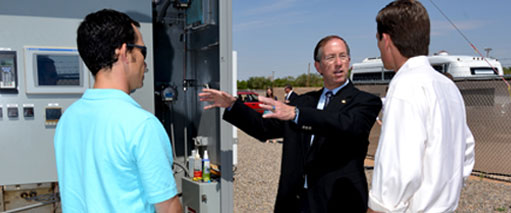Kirtland Jet Fuel Spill Update
Fourth Well Under Construction


Senator Martin Heinrich (D-NM), right, visits the Bulk Fuels Facility Project
Photo courtesy Kirtland AFB Bulk Fuels Facility Project



